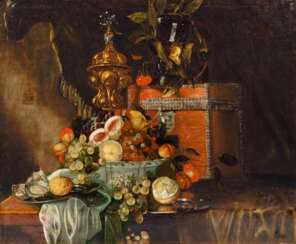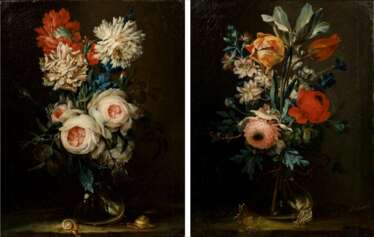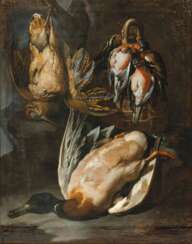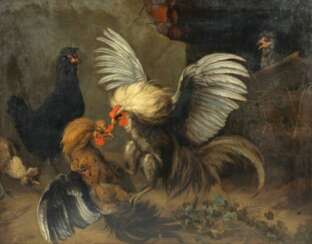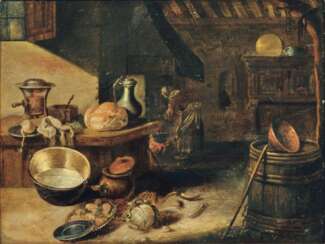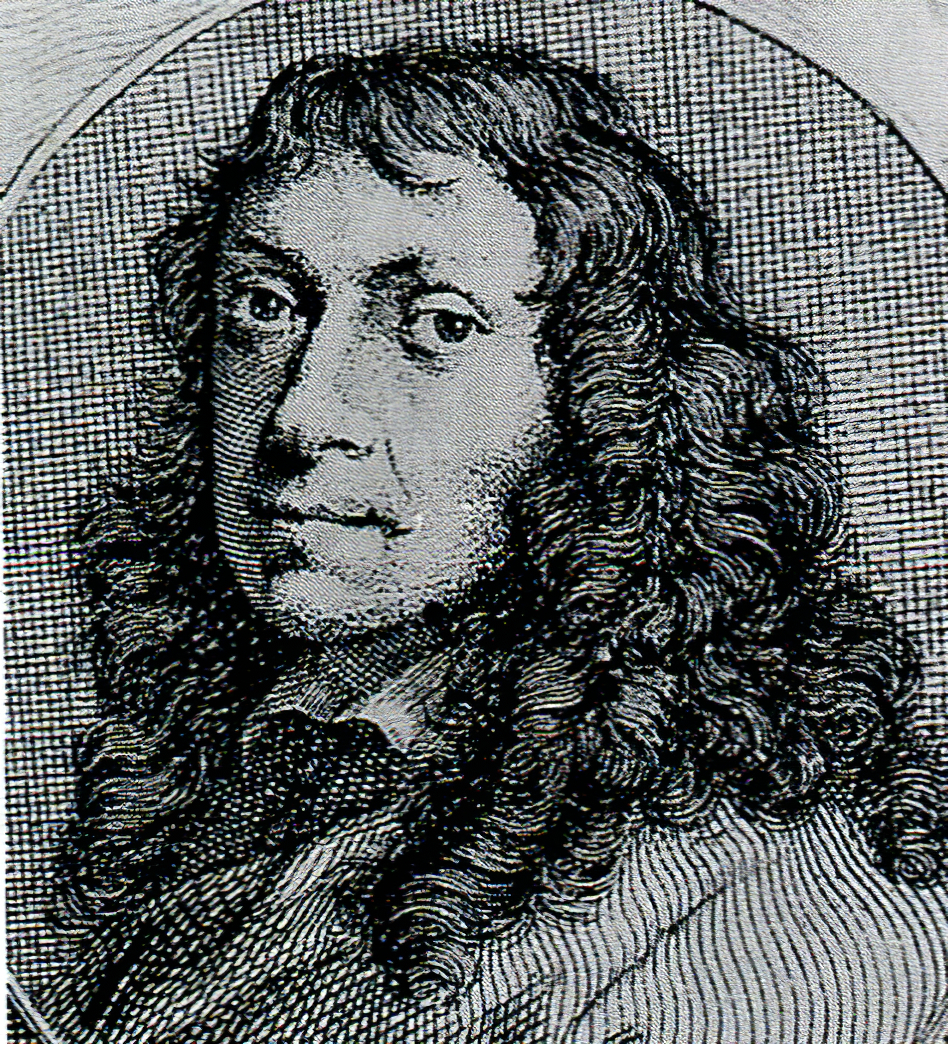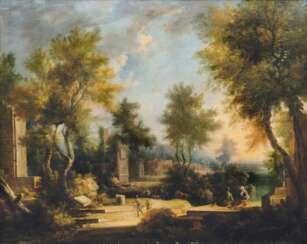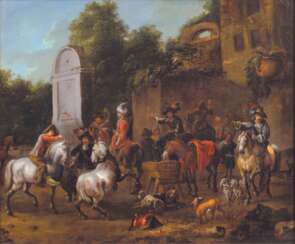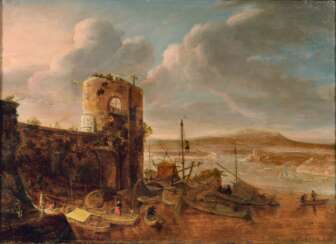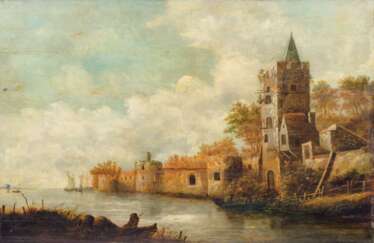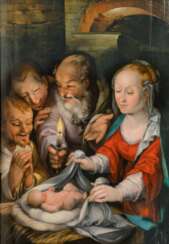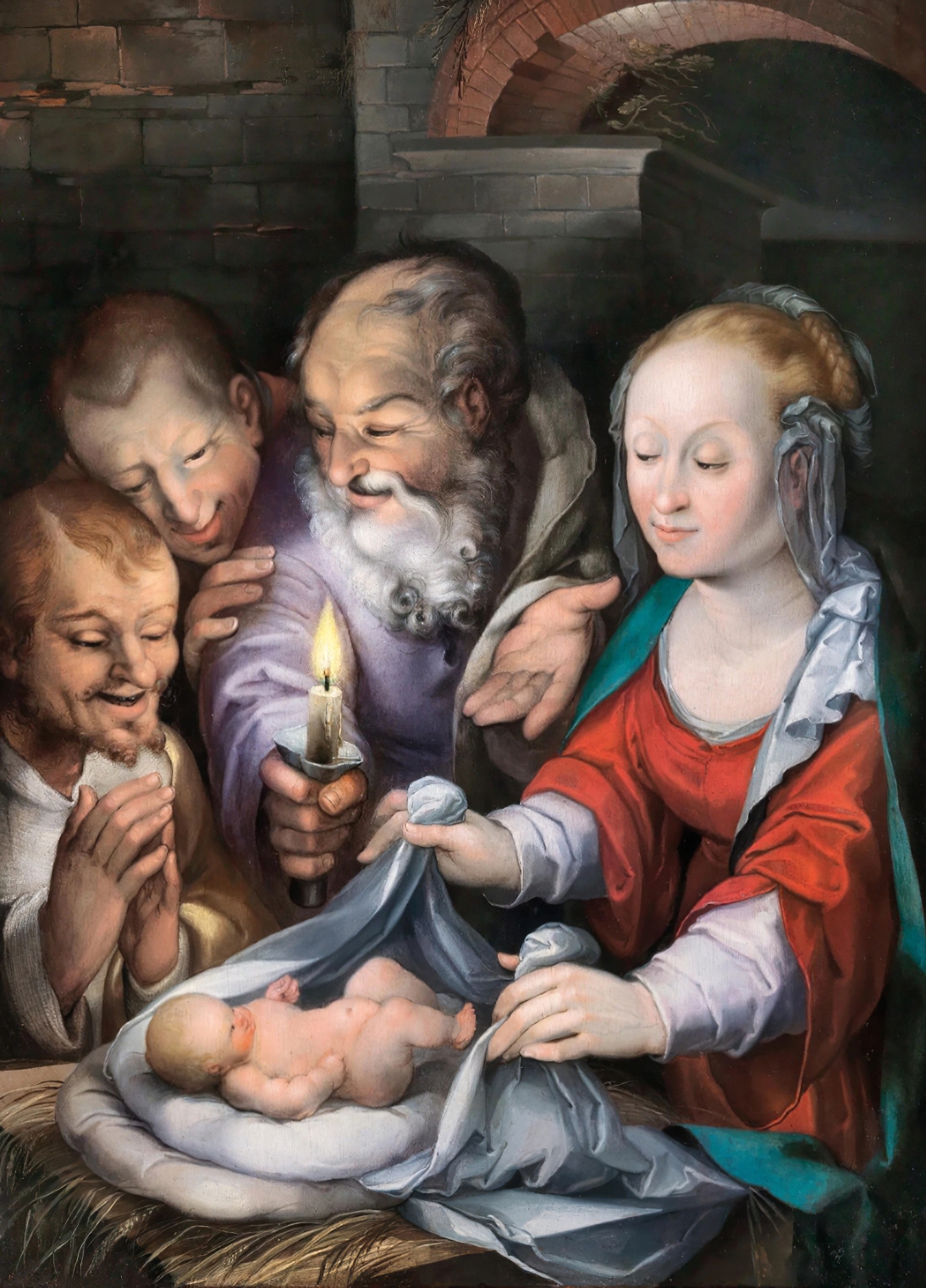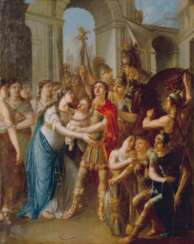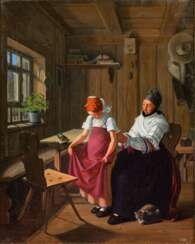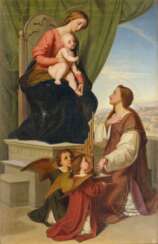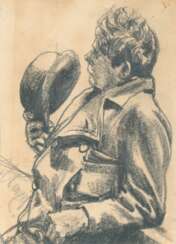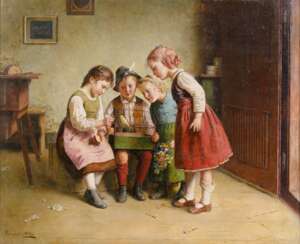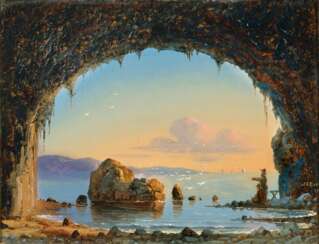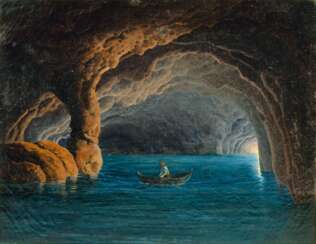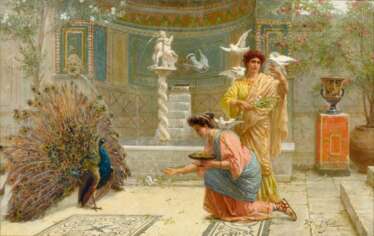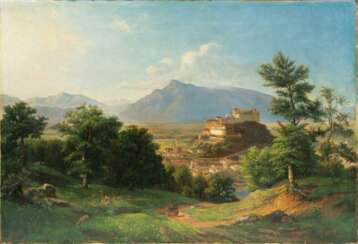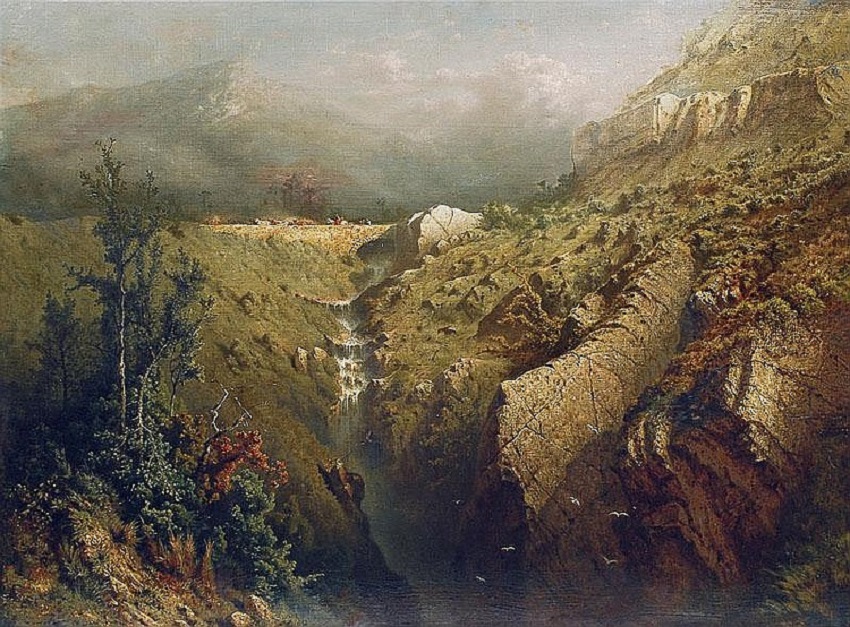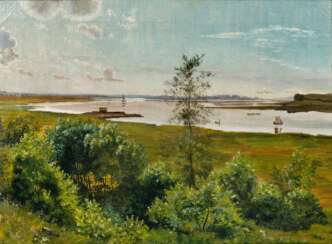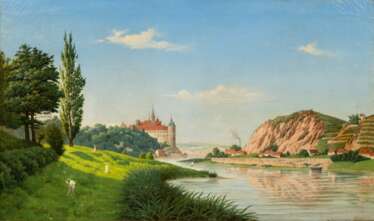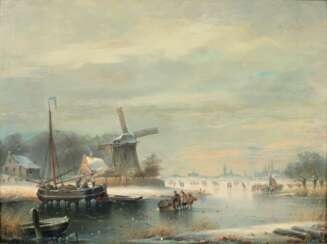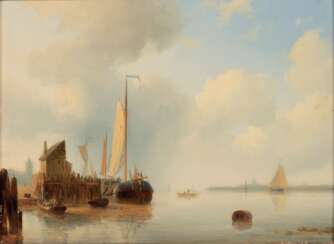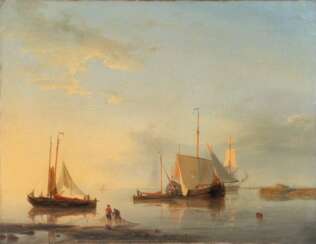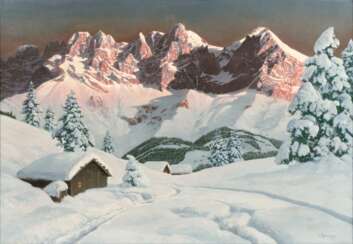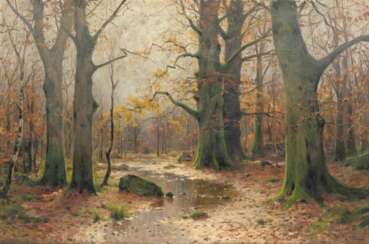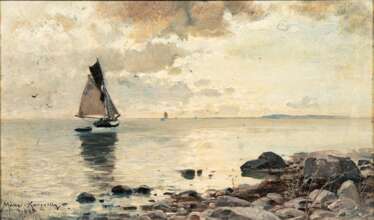
Old Masters to Impressionism — Kunst Auktion
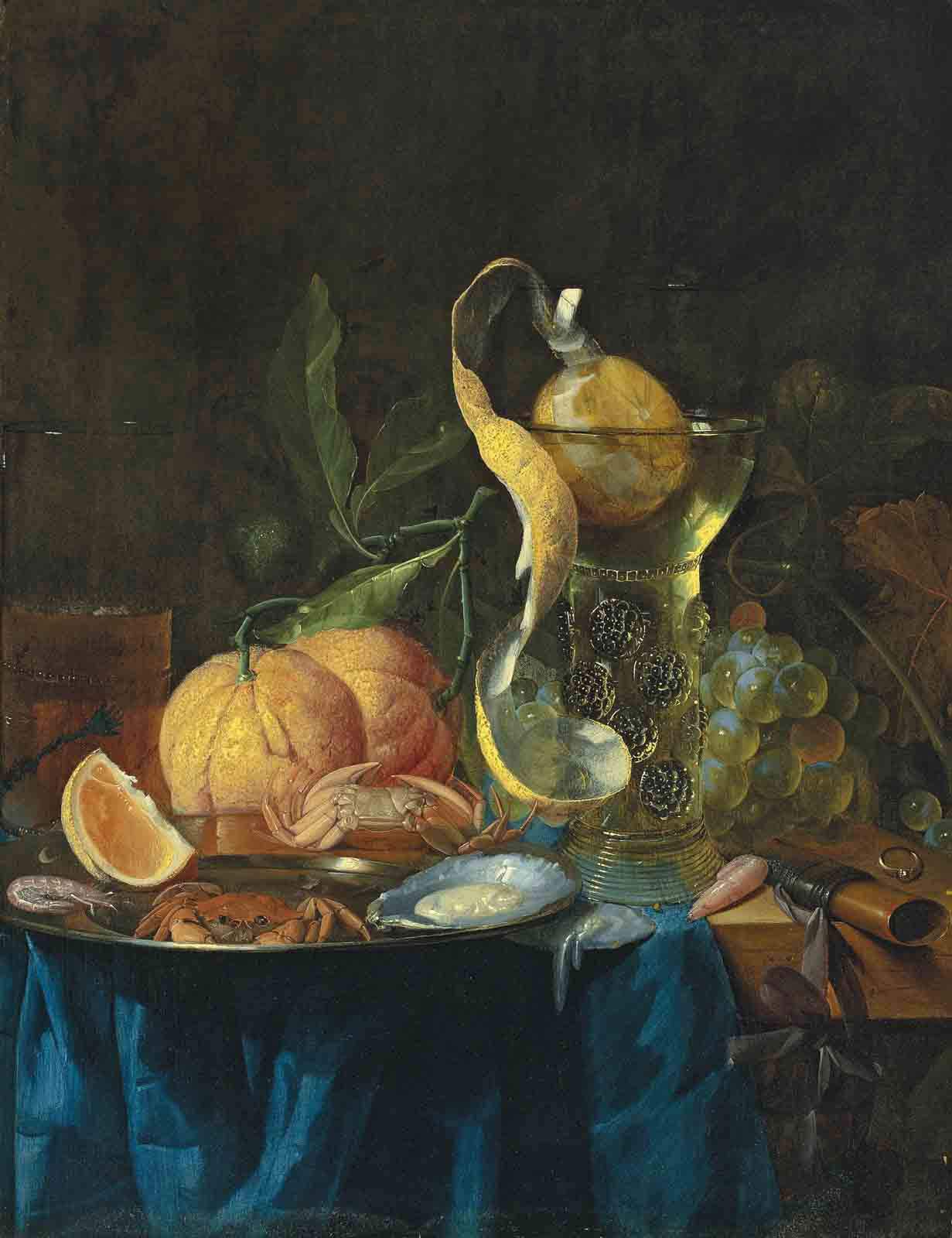
Pieter de Ring was a Dutch painter who specialised in still lifes. He became famous for his rich banquet depictions of fruit, shrimp, oysters, musical instruments, books and precious objects such as nautilus shells or Chinese porcelain.
In his youth, he worked as a bricklayer during the day and drew in the evening; the other family members all worked in the fabric industry. After painting a number of pictures, he apprenticed himself to Jan Davidsz. de Heem with his grandfather's permission. In 1647 he became a founding member of the Guild of Saint Lucas.
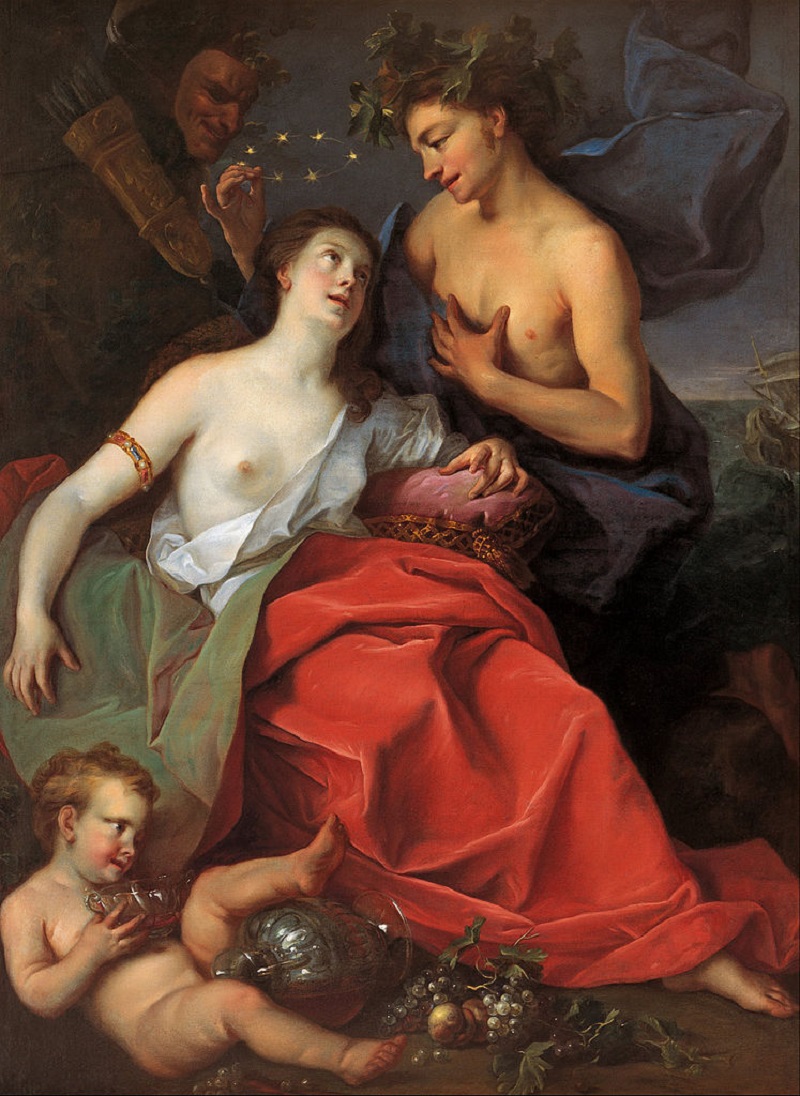
Ignaz Stern was an Austrian Baroque painter who specialised in religious paintings and frescoes. He was greatly influenced by Italian masters such as Correggio and Guido Reni.
Ignaz Stern apprenticed to Carlo Cignani in Forlì before settling in Rome in 1701. In 1713 he returned to Forl, where he painted altarpieces and easel paintings for private individuals and monastic patrons in the Emilia-Romagna region. His earliest known work is the cycle of altarpiece icons in the church of St. Onofrio in Lugo, near Ravenna. In Forle, Stern also painted Our Lady with Child and Saints for the Dominicans.
Stern's style is characterised by a dramatic use of light and shadow and emotional intensity. His religious paintings often depict scenes from the Bible or the lives of saints, and he was known for his ability to convey a sense of religious devotion and piety in his works.
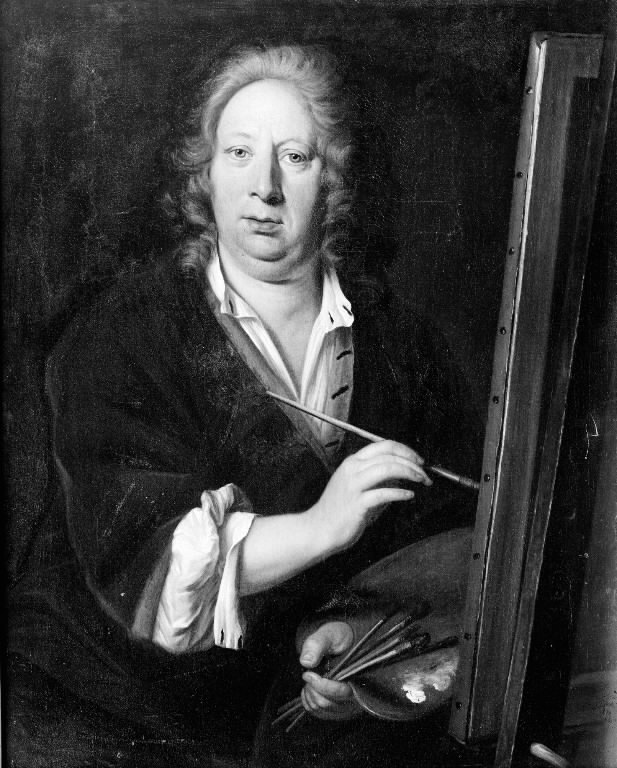
Franz Werner von Tamm, known as Dapper, was a German Baroque painter. One of the most famous masters of German still life in the late 17th and early 18th centuries.
Franz Werner von Tamm studied painting in Italy in the studio of Carlo Maratta. In 1701 he was invited to Vienna as court painter to Emperor Leopold I, where he remained until his death.
He painted with a soft brush live and dead poultry as well as flowers and animals, rather decoratively with an immediate mood.
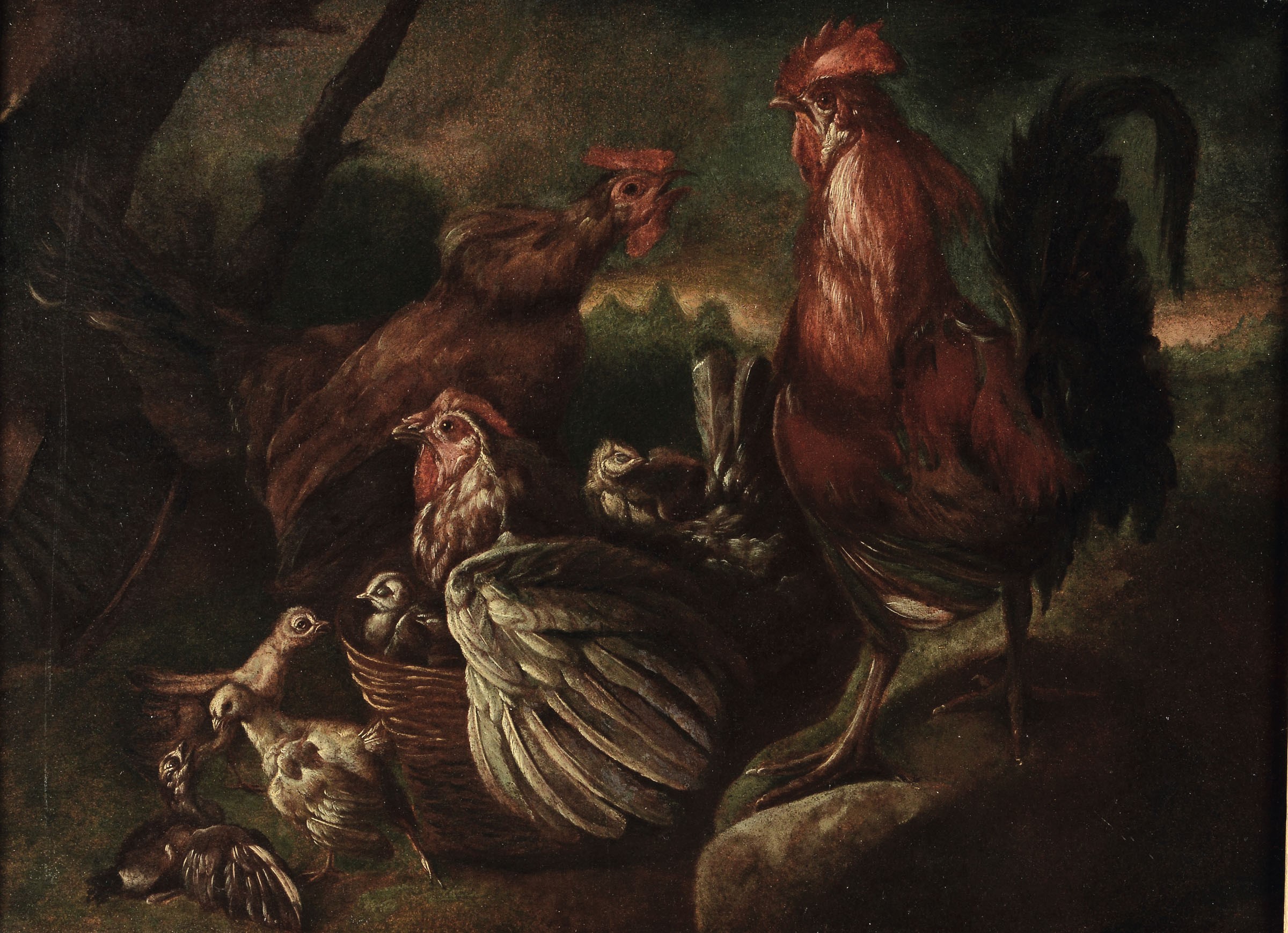
Giorgio Duranti was an Italian painter and cleric of the Baroque period, mainly active in Brescia. An entry in Dandolo's study of the late Venetian Republic states a 1755 as year of death, and that many of his works were in the Royal Gallery of Turin, which was the nucleus of the Sabauda Gallery.
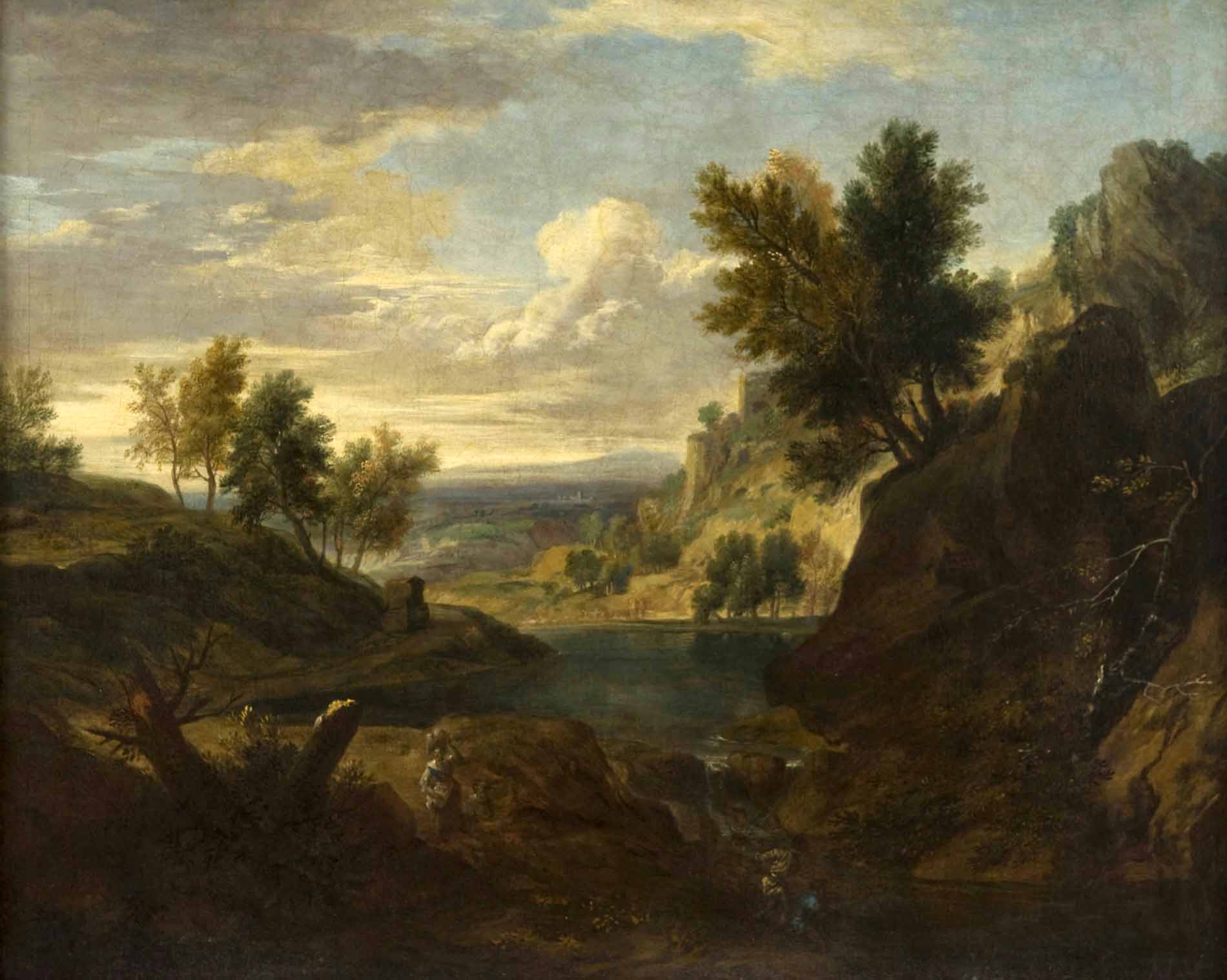
Gaspard Duguet, also known as Gaspard Poussin, was a French painter specialising in landscape painting. He was born into a family of French painters who settled in Rome.
Gaspard Duguet received his artistic training from his uncle, Nicolas Poussin, who was one of the leading Baroque painters. Duguet's early works were strongly influenced by Poussin's style, which emphasized clarity and orderliness of composition.
In the 1650s, Duguet began to develop a style of his own, characterized by his bold brushwork and vibrant use of colour. He became known for his ability to create dramatic and atmospheric landscapes, often depicting scenes from the Roman countryside.
Gaspar Duguet's paintings have a sense of grandeur and monumentality. His landscapes often feature classical ruins and ancient monuments, giving his works a sense of historical depth and resonance.
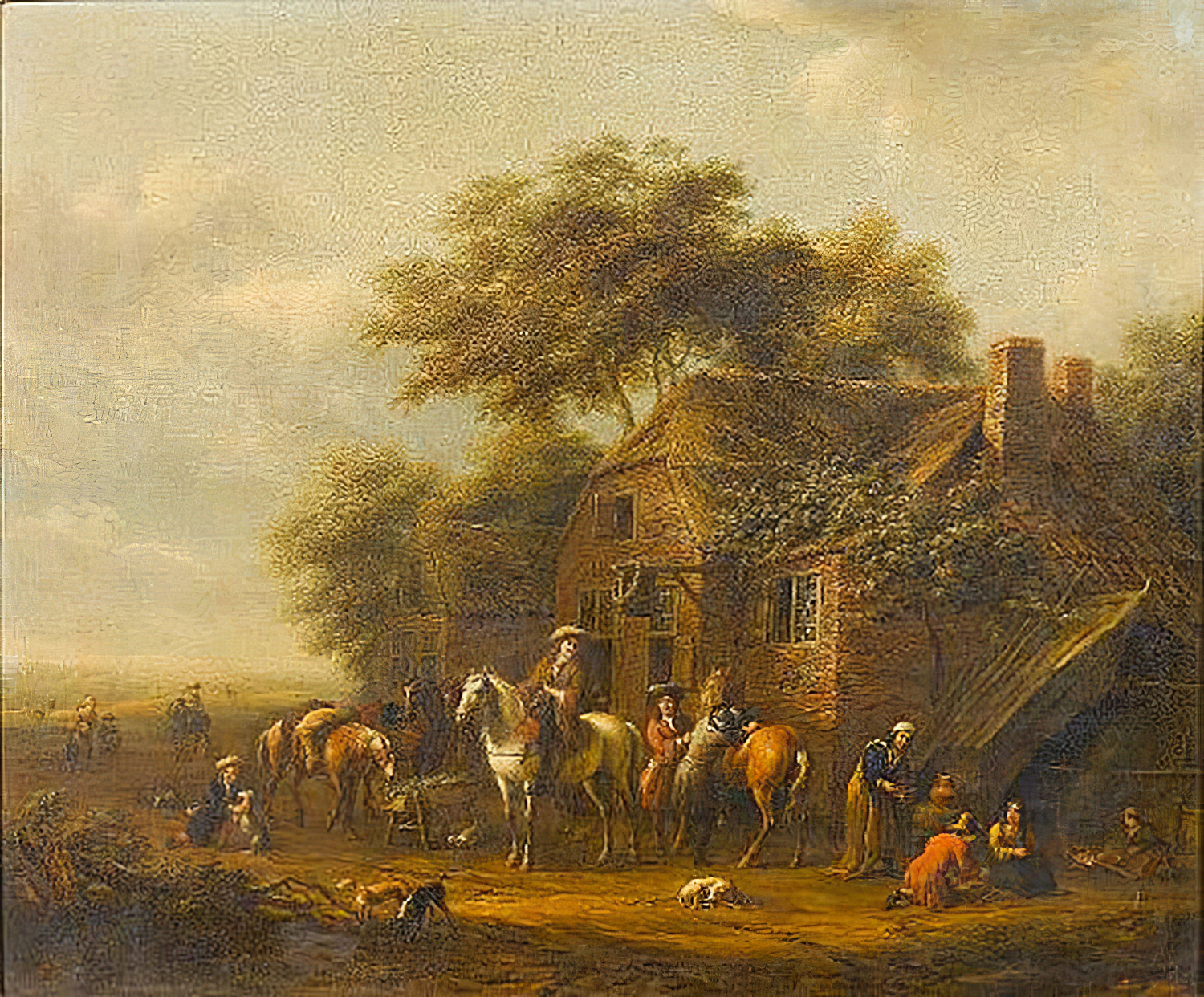
Barend Gael was a Dutch painter and graphic artist of the Dutch Golden Age of painting. He was a pupil of Philips Wouwerman.
Barend Gael was an accomplished painter of Italian landscapes and was known at the Guild of St. Luke's in Haarlem by 1642.
Gael's paintings are noted for their precise composition and use of light and shadow. He often used dark backgrounds to create a sense of depth and contrast, and skillfully used light to emphasise the texture and detail of figures.
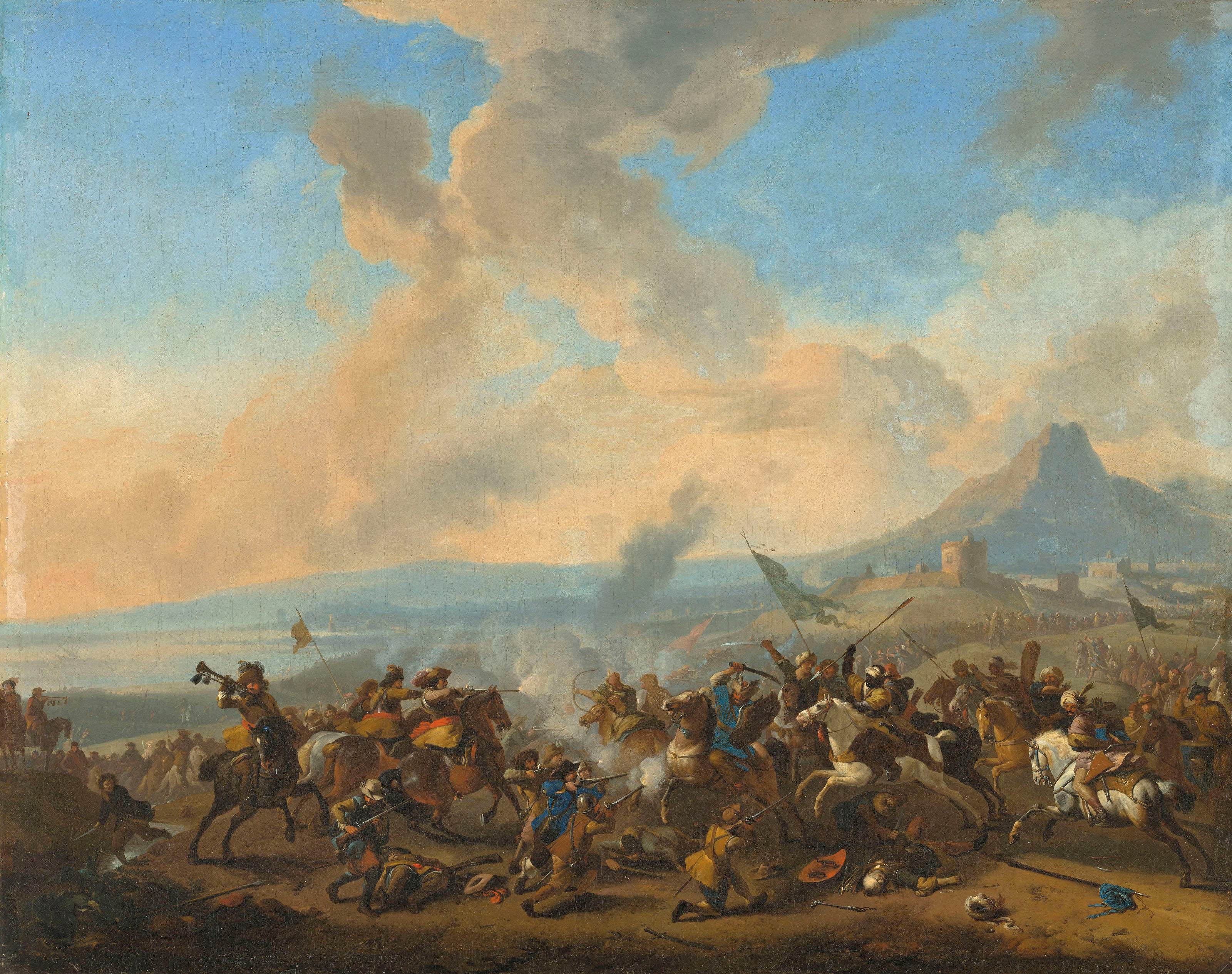
Jan van Huchtenburgh was a Dutch painter of the Dutch Golden Age who specialised in battle scenes and landscapes.
Jan van Huchtenburgh was known for his ability to create dramatic and dynamic battle scenes, often depicting historical events of the 17th and 18th centuries. His work is noted for its precision and attention to detail, as well as his use of light and shadow to create a sense of depth and drama.
In addition to battle scenes, Huchtenburg was also a skilled landscape painter. He often depicted scenes of the Dutch countryside with rolling hills, winding rivers and expansive skies.
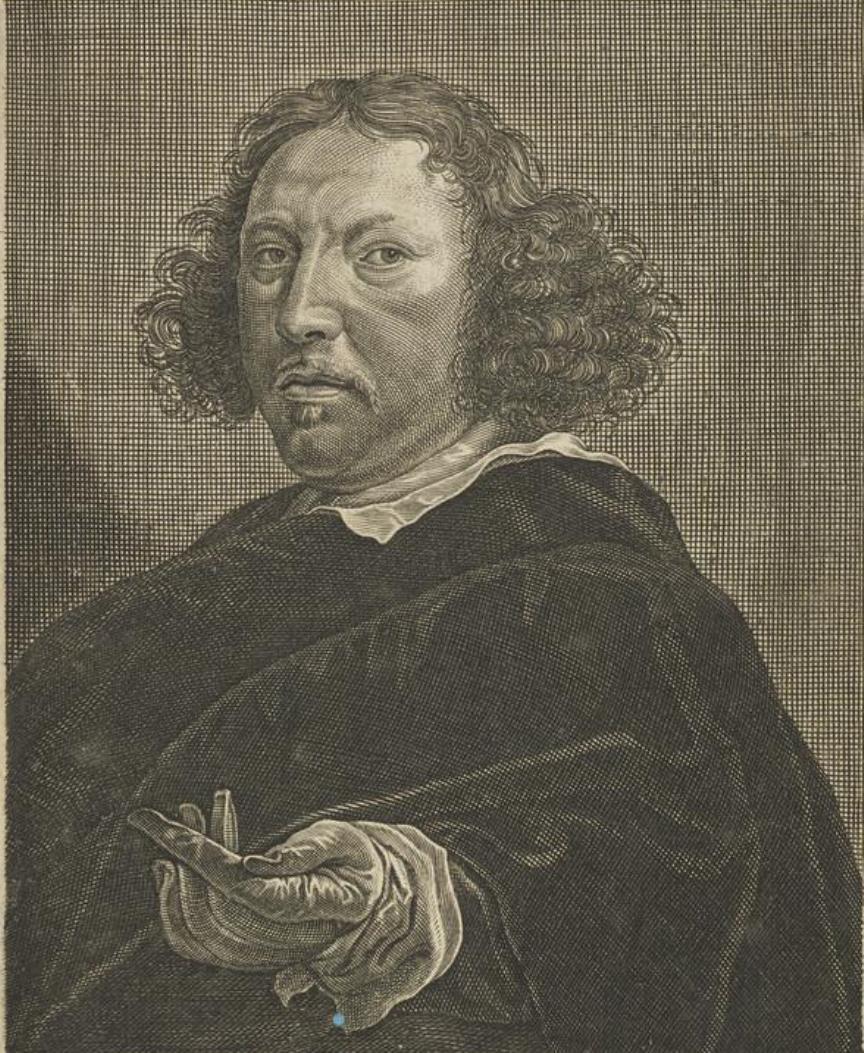
Herman Saftleven the Younger was a Dutch artist of the Golden Age who was Dean of the Guild of St. Luke in Utrecht.
Herman Saftleven the Younger was born into a creative family. His father, Hermann Saftleven the Elder (c. 1580-1627), was the father of three artist sons, Hermann the Younger, Cornelis (1607-1681), and Abraham Saftleven (c. 1611/13 - 1646).
Saftleven the Younger was an extremely productive painter, draughtsman, and printmaker. He is known for his landscapes near rivers as well as scenes of people traveling in the woods.
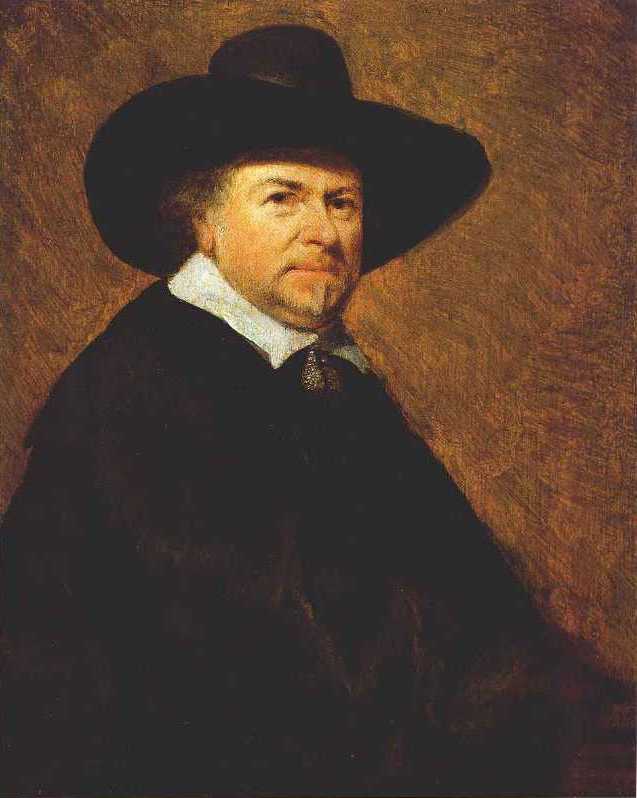
Jan Josephsz. van Goyen was a Dutch landscape painter and draftsman of the Golden Age, a member of the Guild of St. Luke of Leiden, and a representative of the so-called tonal landscape. Van Goyen specialized in landscape painting and left many paintings depicting forest paths, rivers, lakes, and canals. He also painted peasant huts and the outskirts of towns.
Jan van Goin was one of the most prolific painters of the 17th century: some 1,200 paintings he created and some 800 drawings have survived.
Johann Heinrich Wilhelm Tischbein was a German painter, master of portraiture; a member of the famous Tischbein artistic dynasty, one of the closest friends of the poet Johann Wolfgang Goethe.
He studied painting with his uncle Johann Jacob Tischbein in Hamburg. In 1772-1773 he made a study trip to Holland, and from 1777 was engaged in portrait painting in Berlin. In 1779 he went to Rome on a scholarship to the Academy of Arts in Cassel. After studying the antique art monuments he gradually changed his painting style from rococo to classical. In Italy he painted mostly landscapes, still life and history.
From 1789 to 1799 Johann Heinrich Wilhelm painted in the period from 1789 to 1799. Johann Heinrich Wilhelm Tischbein was director of the Academy of Arts in Naples.
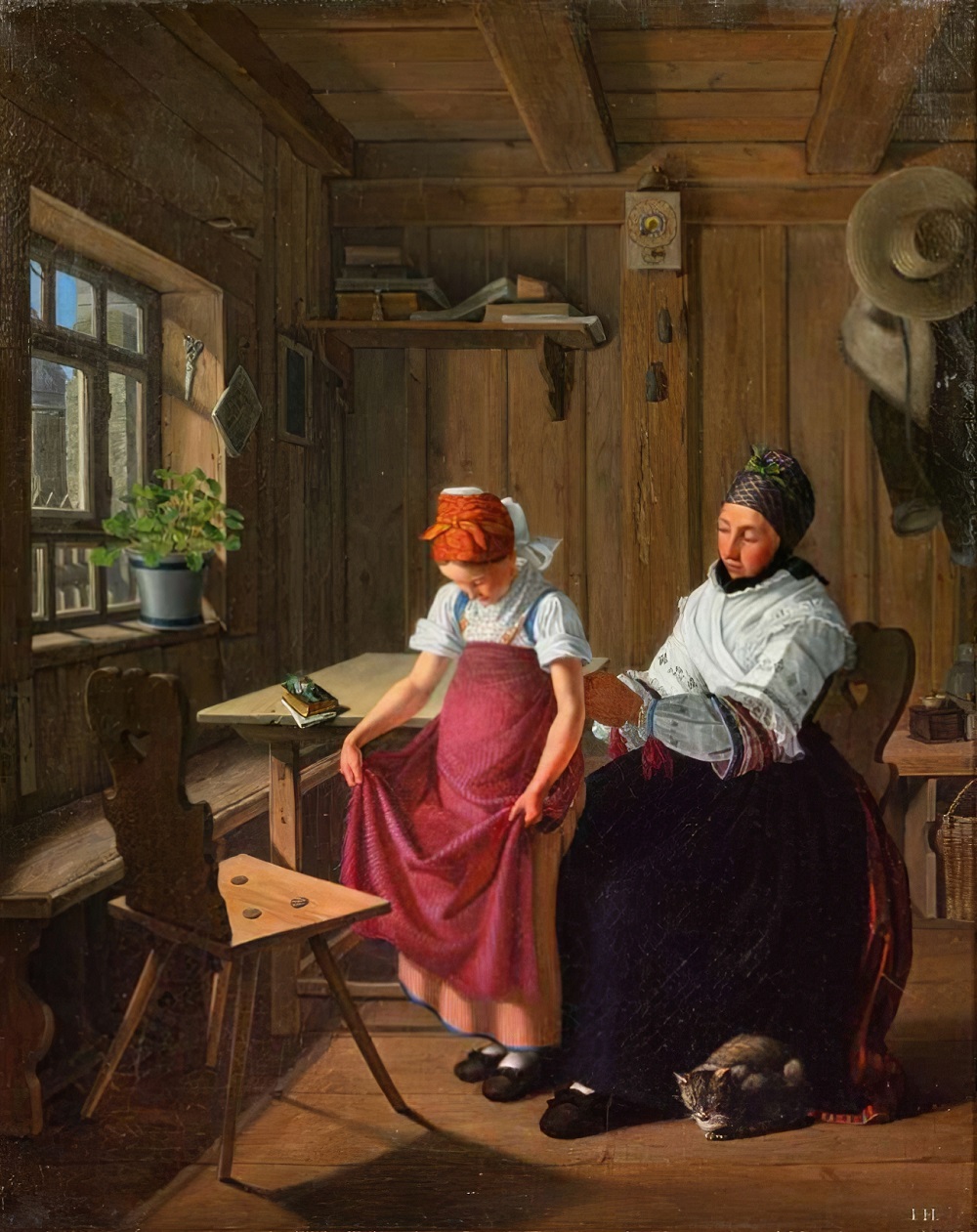
Johann Gottlieb Hantzsch was a German genre painter. He studied painting at the Dresden Academy of Arts from 1811 to 1822.
Johann Gottlieb Hantzsch initially devoted himself to war motifs and romantic images. From 1827 onwards he mostly painted scenes from the life of petty bourgeoisie. Some of them were engraved by Ludwig Richter.
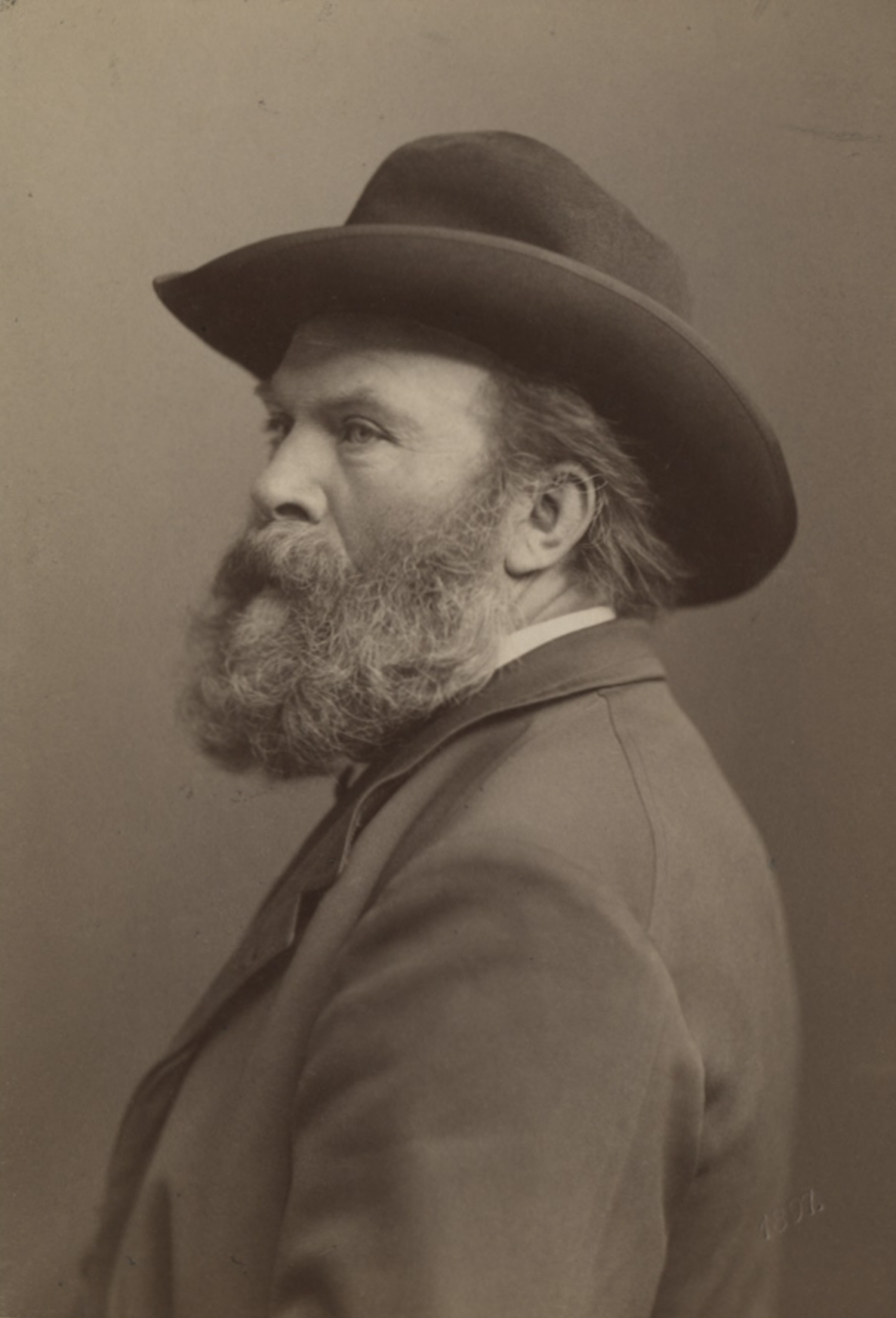
Friedrich Geselschap was a German historical painter who worked in the Classical style. He studied painting at the academies of fine arts in Dresden and Düsseldorf with Karl Ferdinand Sohn, Heinrich Mücke and Friedrich Wilhelm von Schadow.
The Romantic-religious aspects of the Nazarenes had little influence on Gezielschap's artistic development. Rather, it was guided by their neo-classical ideas. It was the ancient models and his fascination with the Italian Renaissance masters, above all Raphael, that made Friedrich Gesellschap a proponent of idealism.
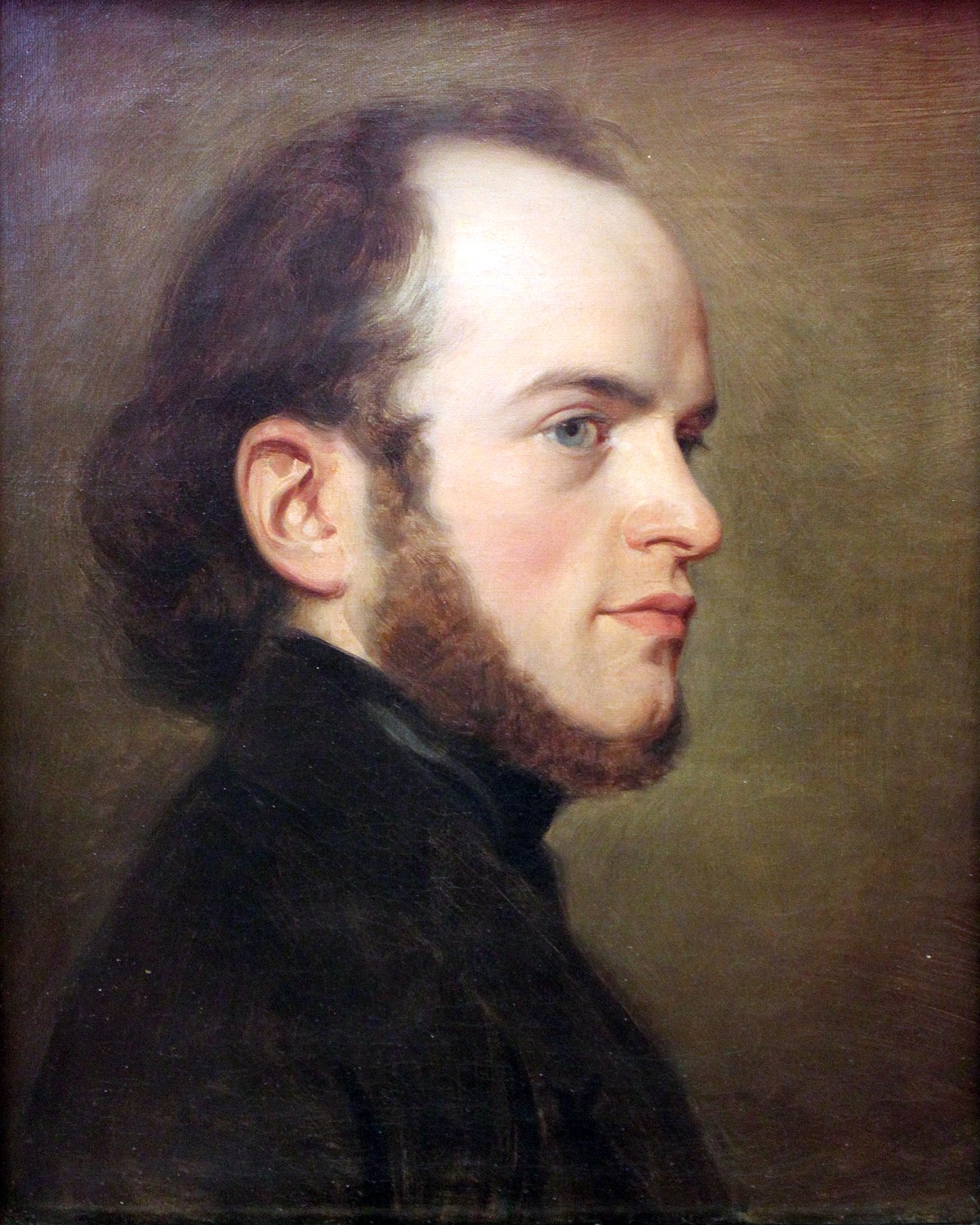
Adolph Friedrich Erdmann von Menzel was a German Realist artist noted for drawings, etchings, and paintings. Along with Caspar David Friedrich, he is considered one of the two most prominent German painters of the 19th century, and was the most successful artist of his era in Germany. First known as Adolph Menzel, he was knighted in 1898 and changed his name to Adolph von Menzel.
His popularity in his native country, owing especially to his history paintings, was such that few of his major paintings left Germany, as many were quickly acquired by museums in Berlin. Menzel's graphic work (and especially his drawings) were more widely disseminated; these, along with informal paintings not initially intended for display, have largely accounted for his posthumous reputation.
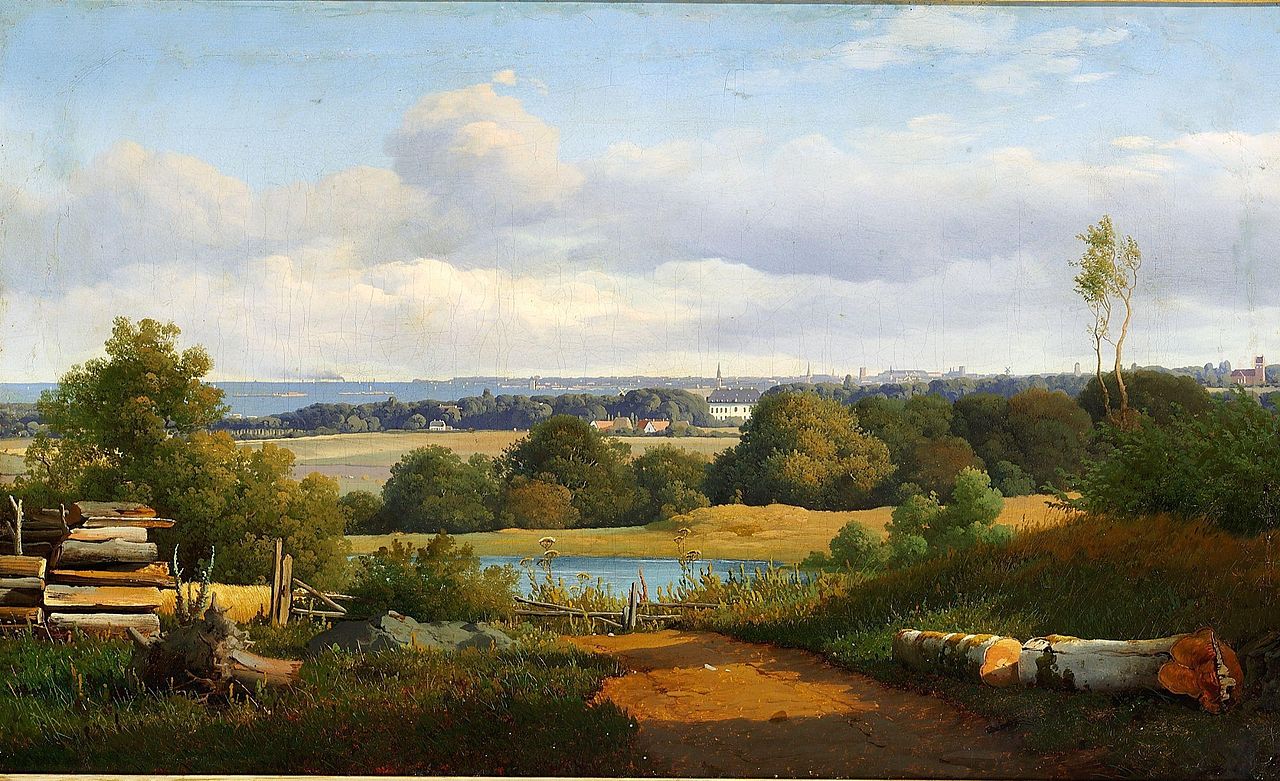
Anton Eduard Kieldrup was a Danish artist. He studied painting at the Royal Danish Academy of Fine Arts in Copenhagen.
Anton Eduard Kieldrup belonged to the young generation of landscape painters. He broke free from the influence of his predecessors as a landscape painter and depicted the nature of his homeland in fresh colours rather than arrangements.

Anton Eduard Kieldrup was a Danish artist. He studied painting at the Royal Danish Academy of Fine Arts in Copenhagen.
Anton Eduard Kieldrup belonged to the young generation of landscape painters. He broke free from the influence of his predecessors as a landscape painter and depicted the nature of his homeland in fresh colours rather than arrangements.
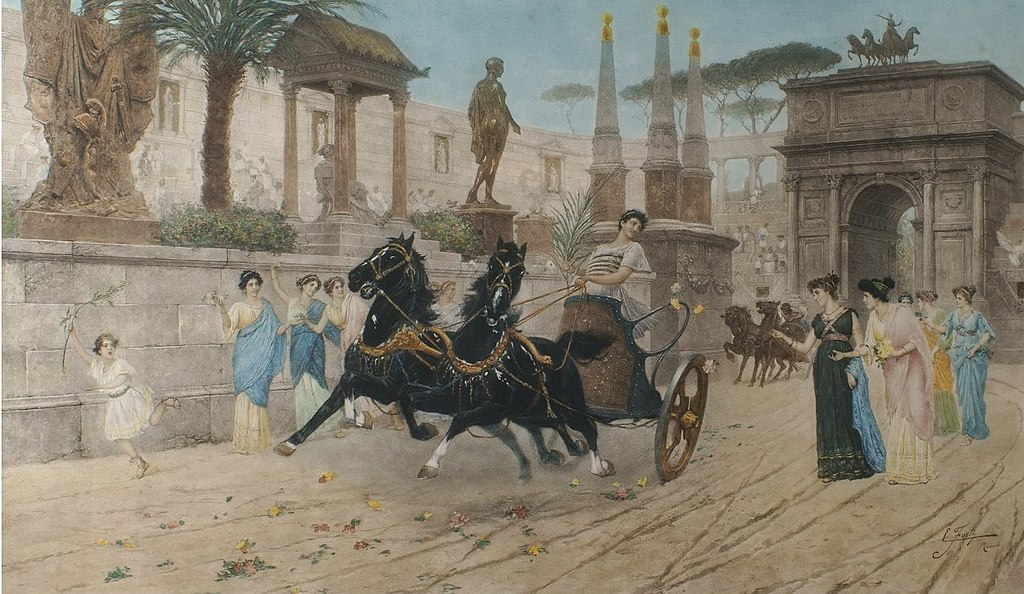
Ettore Forti is an Italian painter who produced numerous paintings on ancient themes.
Ettore Forti worked in Rome and peaked in popularity in the 1890s and 1900s. Art historians classify the work of Forti to the so-called Neopompeian school, which was characterized by an aspiration to reproduce the image of Ancient Rome in their paintings as faithfully as possible (at the level of advanced historical knowledge of their time). For this purpose they actively used, in particular, data obtained by scientists during archaeological excavations in Herculaneum and Pompeii. Whereas other artists were mainly interested in scenes from ancient mythology or depictions of significant historical events, the Neo-Pompeians were characterised by an interest in genre painting and the reproduction of scenes from ancient everyday life.
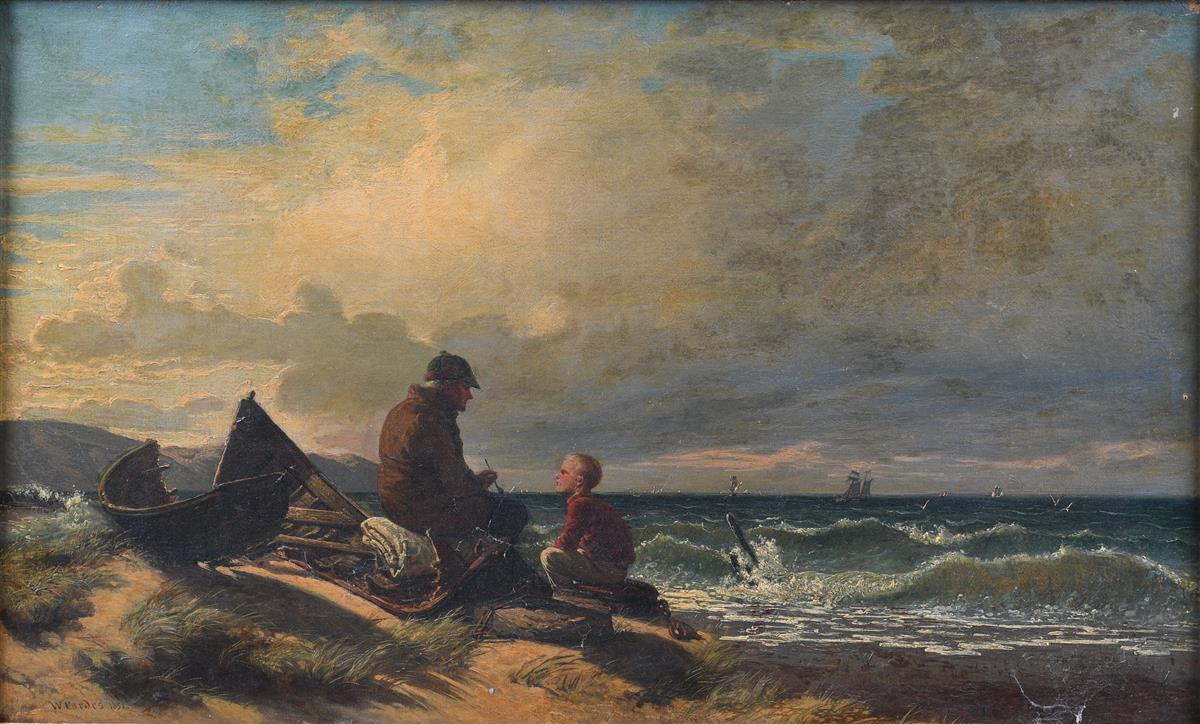
Johann Wilhelm Cordes was a German landscape painter.
Johann Wilhelm Cordes entered the Academy of Fine Arts in Prague, then moved to the Academy of Fine Arts in Düsseldorf in 1842, where he studied with Karl Friedrich Lessing and Johann Wilhelm Schirmer.
He specialised in realistic landscapes painted during his travels. He also created coastal scenes with staffage.
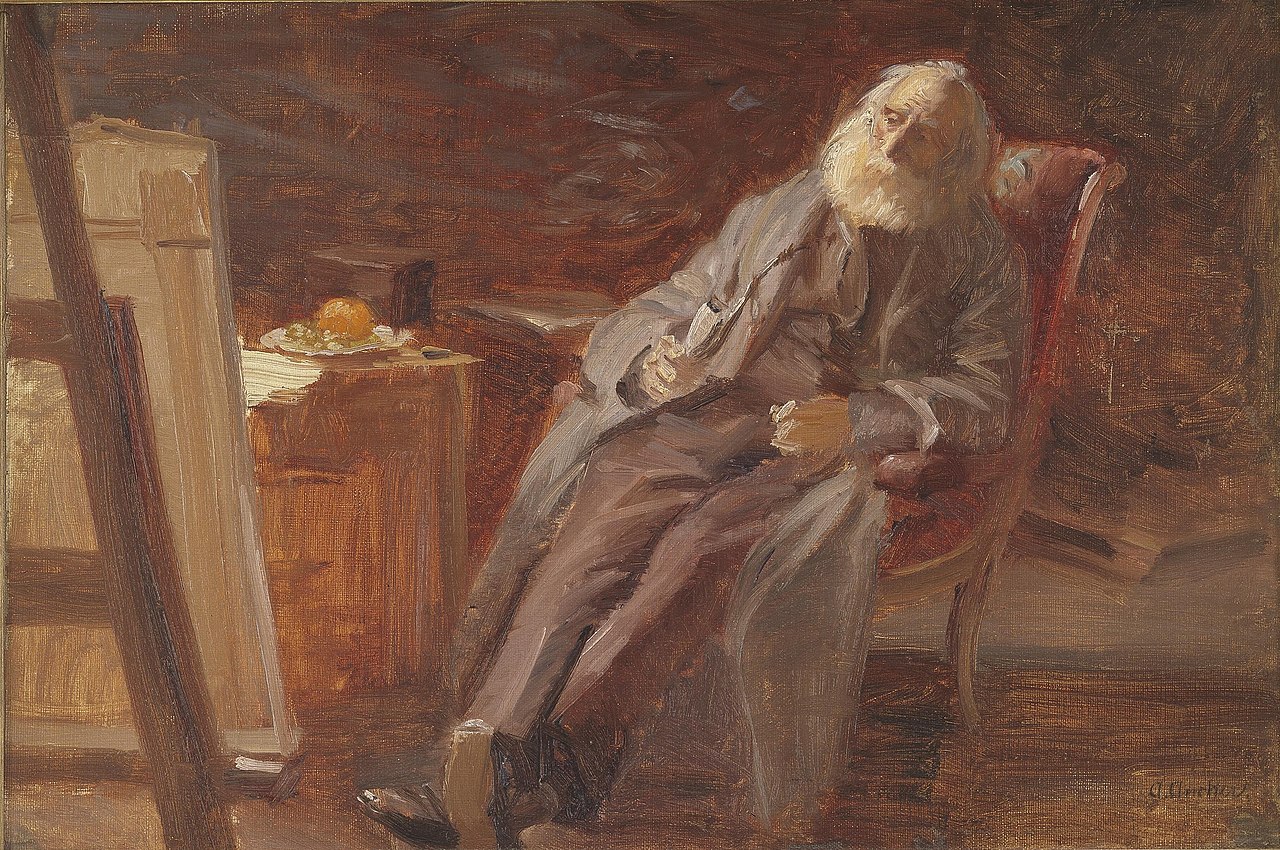
Peter Vilhelm Carl Kyhn was a Danish landscape painter who belonged to the generation of national Romantic artists. Although he outlived many of his colleagues by several decades, he remained a traditionalist and was sharply critical of many new trends in painting of his time. He studied at the Royal Danish Academy of Fine Arts in Copenhagen.
Peter Wilhelm Kyhn retained the freshness of his vision until the end of his life. He depicted a naturalistic landscape, showing and celebrating the nature of his country, especially exploring the countryside.
Kyhn also played a role as an educator, founding several schools of alternative art, including a painting school for women.
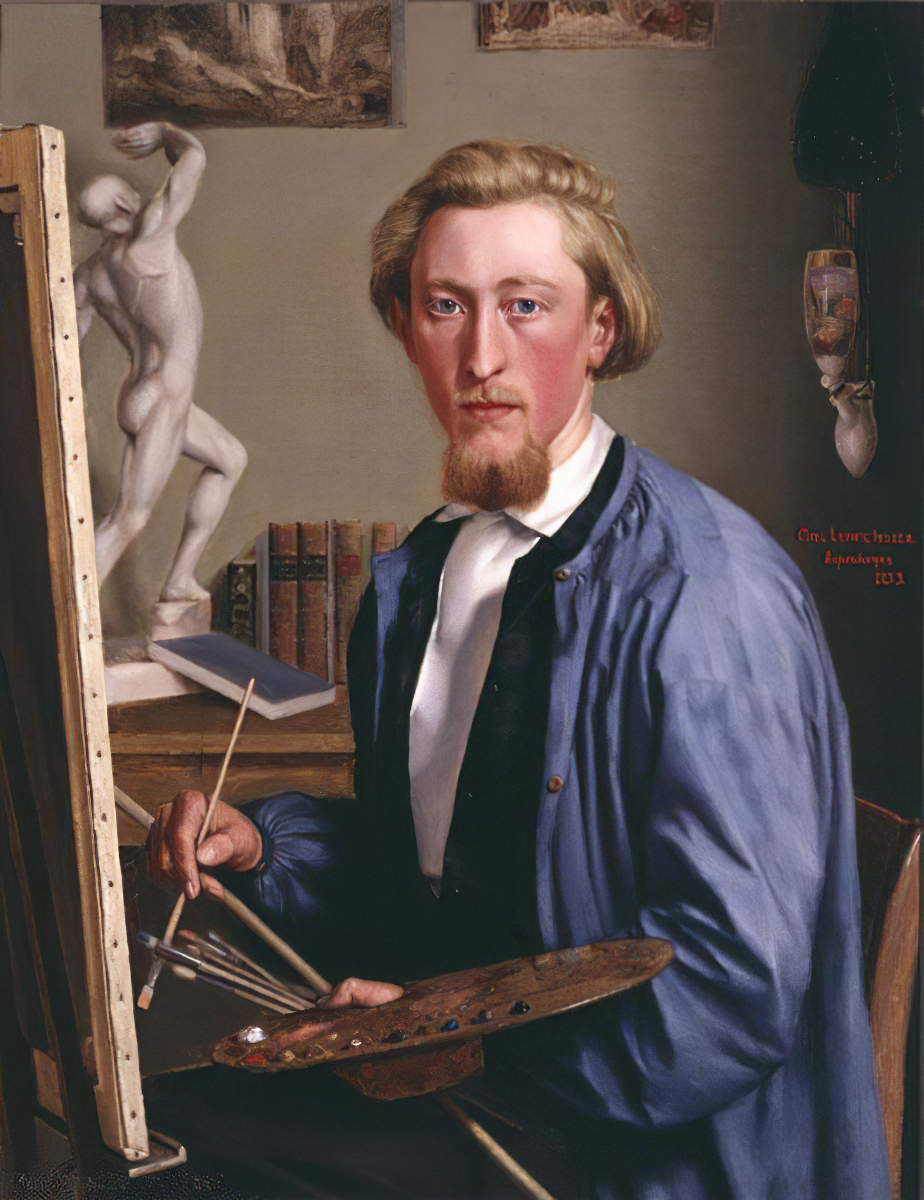
Carl Ludwig Jessen is a German painter. He was known for his paintings on the everyday life of peasants in North Friesland. He studied painting at the Royal Danish Academy of Fine Arts in Copenhagen under Wilhelm Marstrand.
Carl Ludwig Jessen's work occupies a central place in Danish and North German art history. His paintings depict the traditions and everyday life of the North German community with a distinctly naturalistic precision.

Carl Ludwig Jessen is a German painter. He was known for his paintings on the everyday life of peasants in North Friesland. He studied painting at the Royal Danish Academy of Fine Arts in Copenhagen under Wilhelm Marstrand.
Carl Ludwig Jessen's work occupies a central place in Danish and North German art history. His paintings depict the traditions and everyday life of the North German community with a distinctly naturalistic precision.
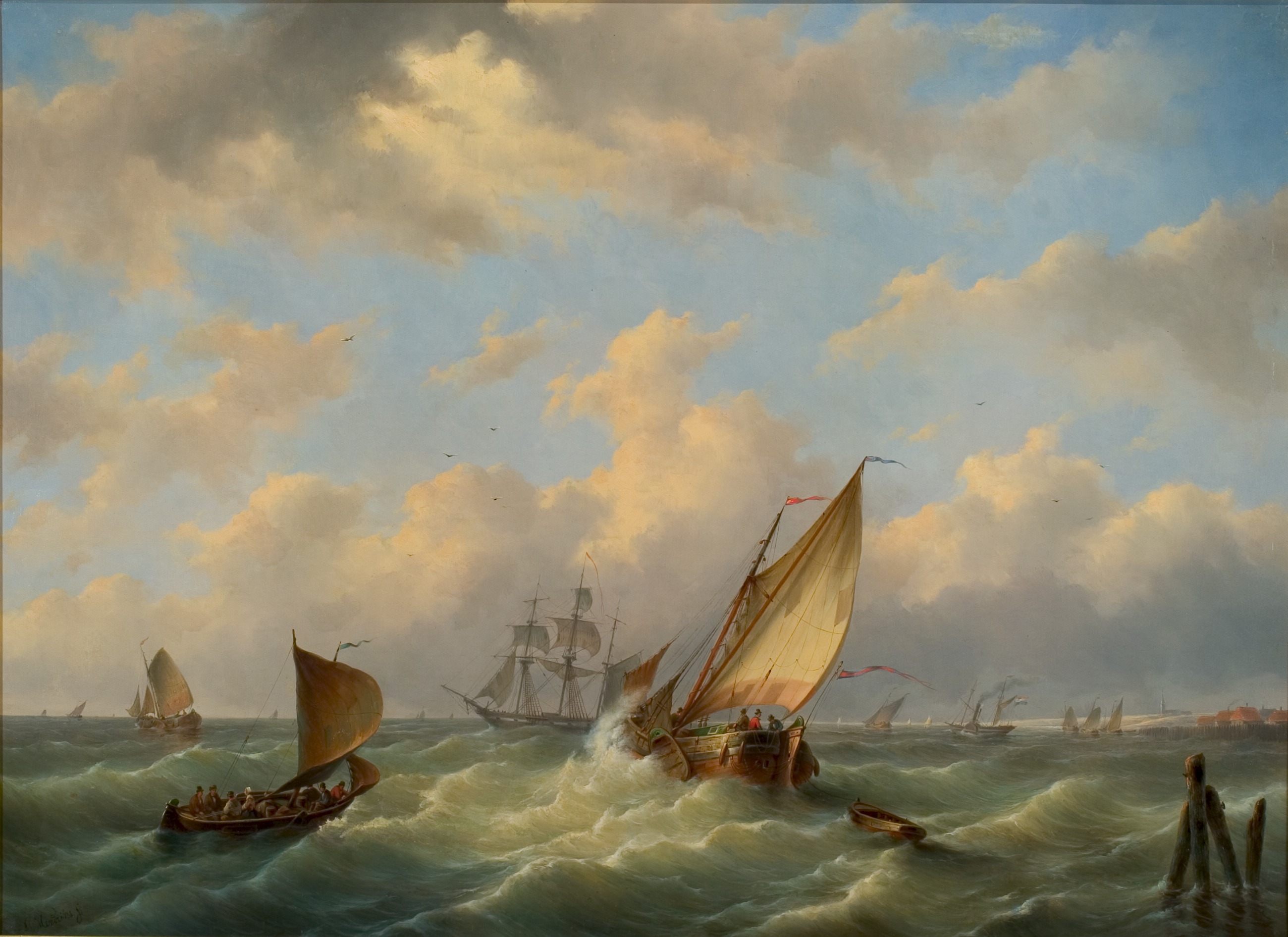
Gerardus Hendriks is a Dutch painter who specialised in river and seascapes as well as winter scenes on ice. He also painted rural landscapes with livestock and peasant figures.
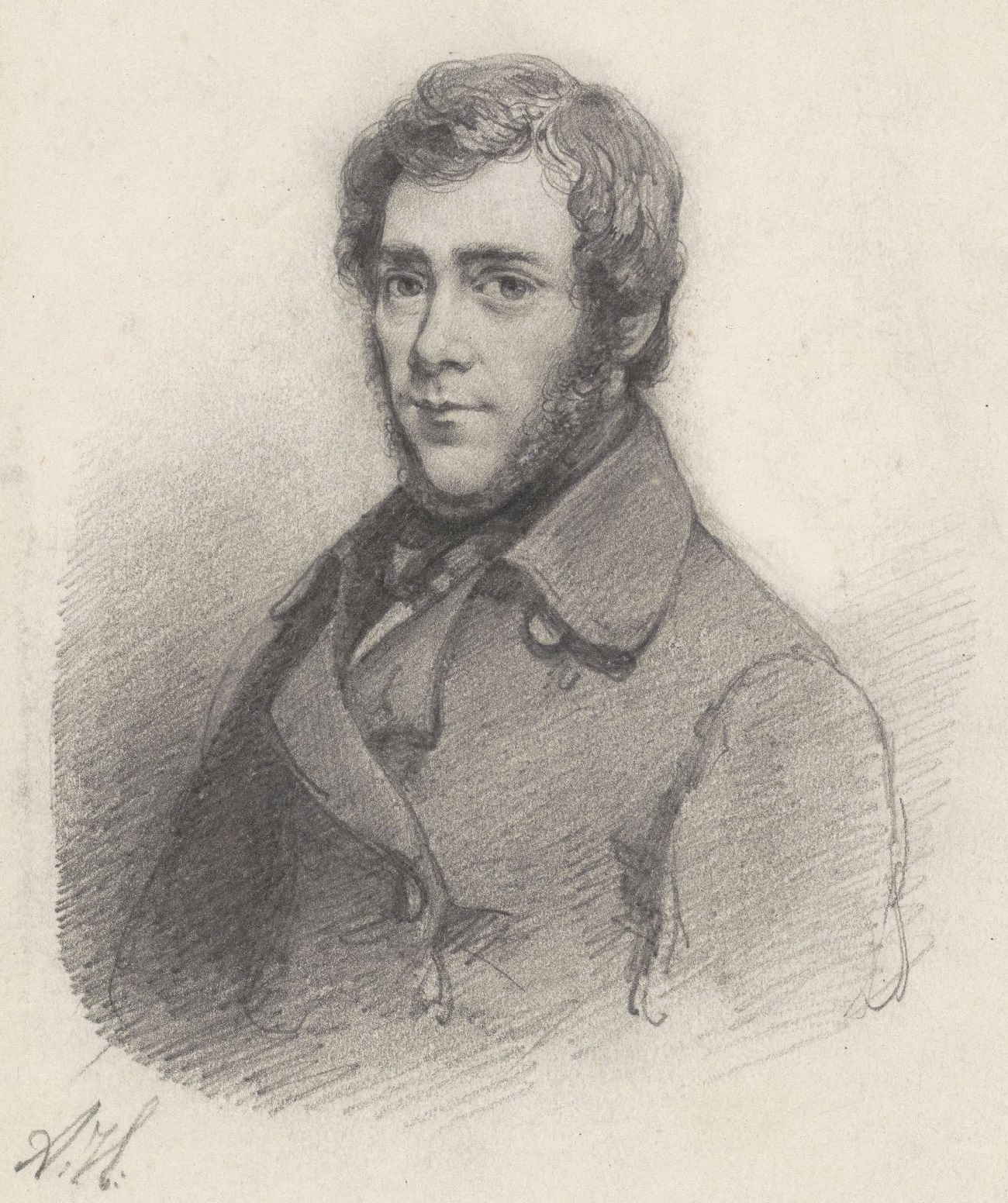
Abraham Hulk was an Anglo-Dutch painter, draughtsman and lithographer. He initially trained as a portraitist, but became a well-known as a marine-painter and the patriarch of a whole family of Anglo-Dutch artists.
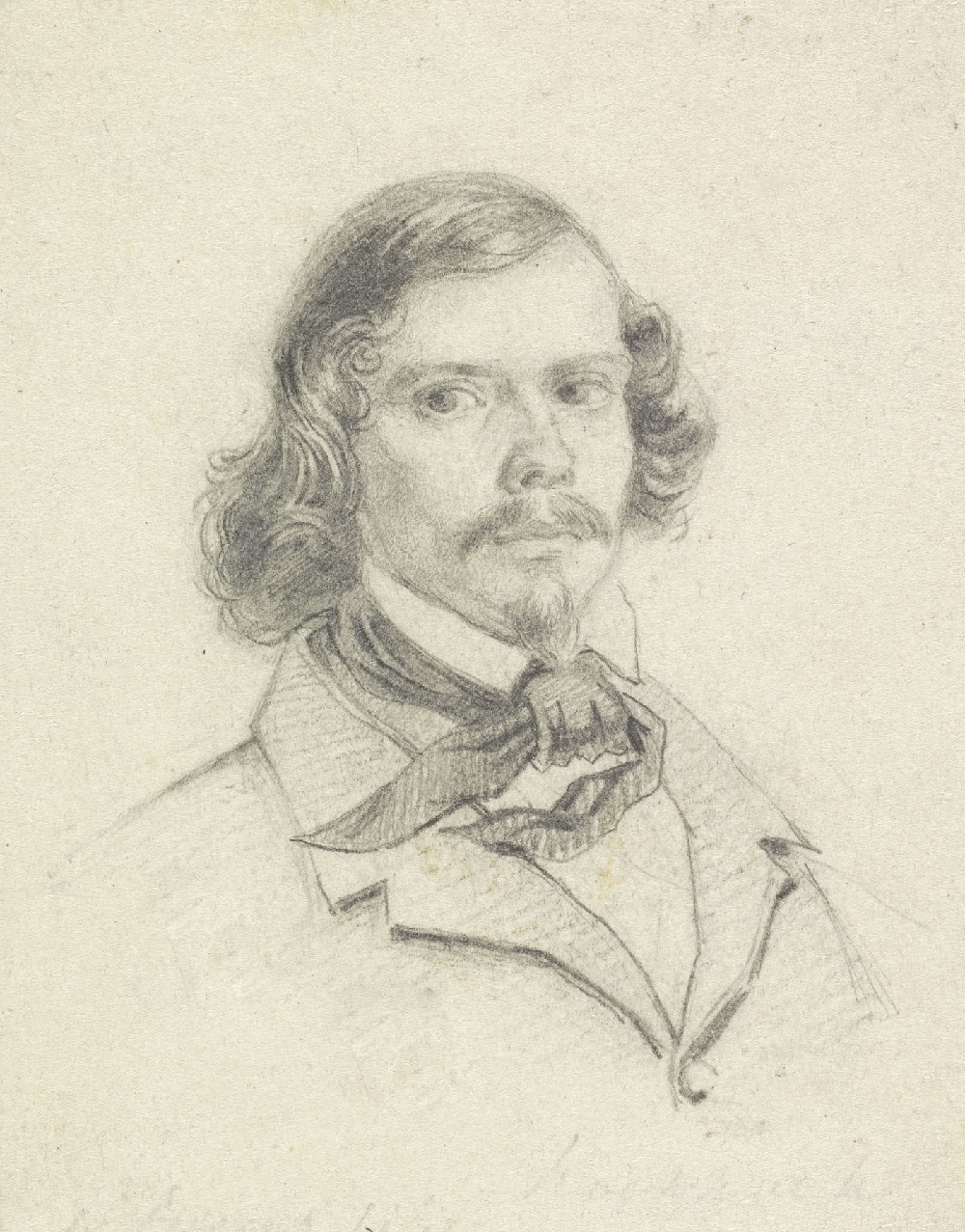
Hermanus Koekkoek was a distinguished Dutch painter known for his marine art. As a member of the renowned Koekkoek Painting Family, Hermanus followed in the footsteps of his father, Johannes Hermanus Koekkoek, and his brothers, becoming an influential figure in the realm of maritime and landscape painting.
His art education began under the tutelage of his father and later extended to formal studies at the Rijksakademie in Amsterdam, where he honed his skills in marine art, a genre that he primarily focused on throughout his career. Hermanus's works exhibit a blend of Realism and Romanticism, drawing inspiration from the Dutch Golden Age of painting. His contributions to the art world were recognized with a gold medal at an exhibition held by Arti et Amicitiae, an artists' society in Rotterdam.
Hermanus Koekkoek's paintings often depict serene maritime scenes, showcasing his adeptness at capturing the tranquility and dynamism of the sea. His works were well received not only in the Netherlands but also in Germany and England, and today, they can be viewed in prestigious institutions like the Teylers Museum and the Museum Boijmans Van Beuningen.
For art collectors and enthusiasts, Hermanus Koekkoek's oeuvre provides a captivating glimpse into 19th-century Dutch marine and landscape painting, offering a testament to his skill and artistry in capturing the essence of the natural world and maritime life.
If you are intrigued by Hermanus Koekkoek's artistry and wish to stay informed about exhibitions, sales, or auctions featuring his works, consider subscribing to updates related to this esteemed painter.
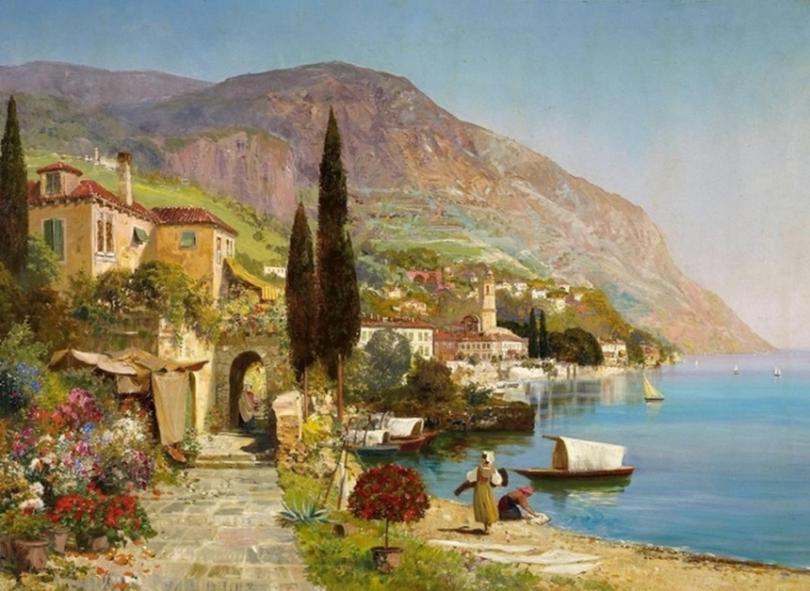
Alois Arnegger was an Austrian painter. He studied at the Academy of Fine Arts Vienna and was taught by Robert Russ and August Eisenmenger. Alois Arnegger became famous as a scene painter.
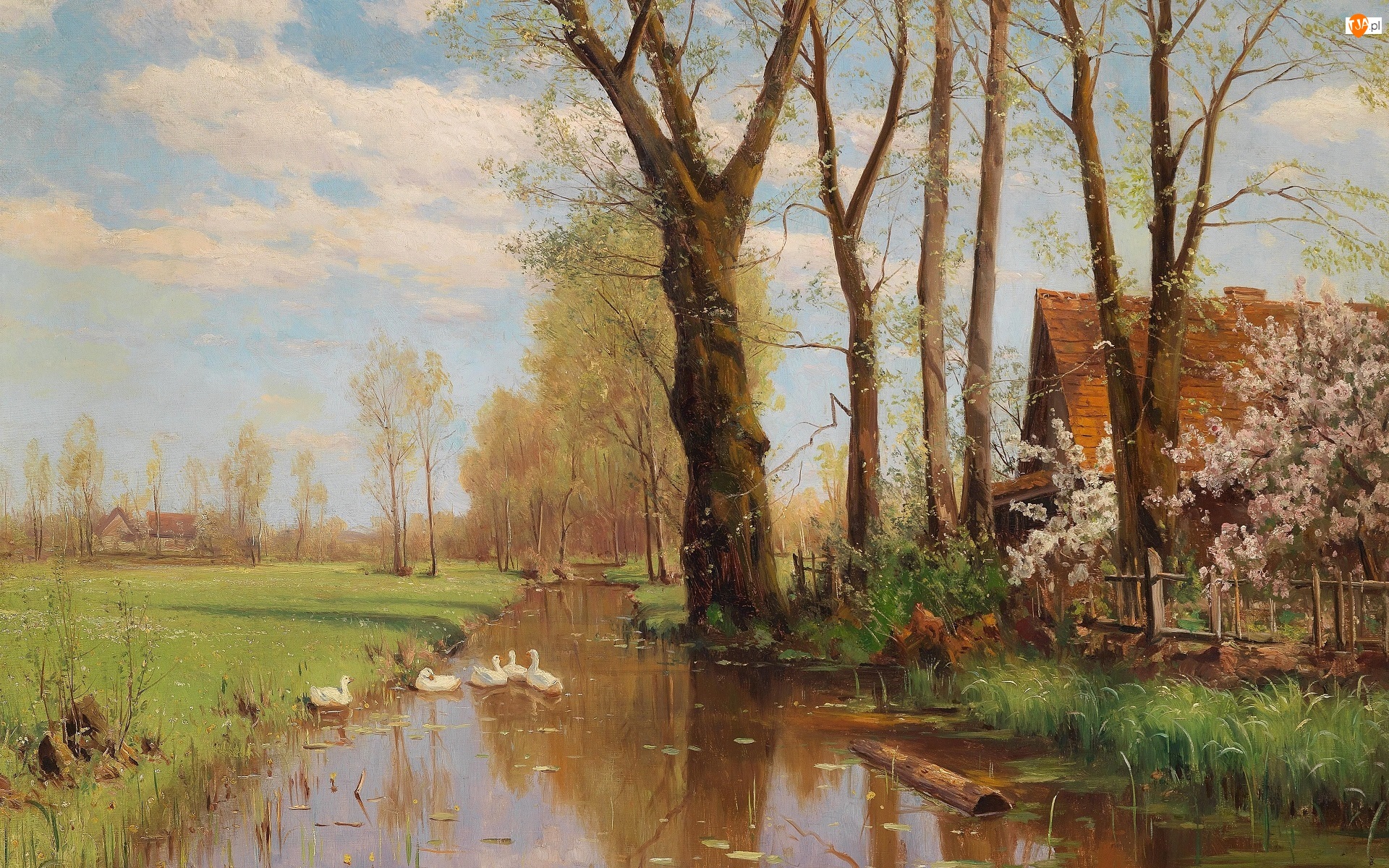
Walter Moras was a German landscape painter.
His favorite subject was provincial Germany: roads among the trees, rivers and streams, villages and mills. Moras is deservedly considered a master of winter landscapes. He was a realist painter, but he did not avoid some influence of impressionism in his works.
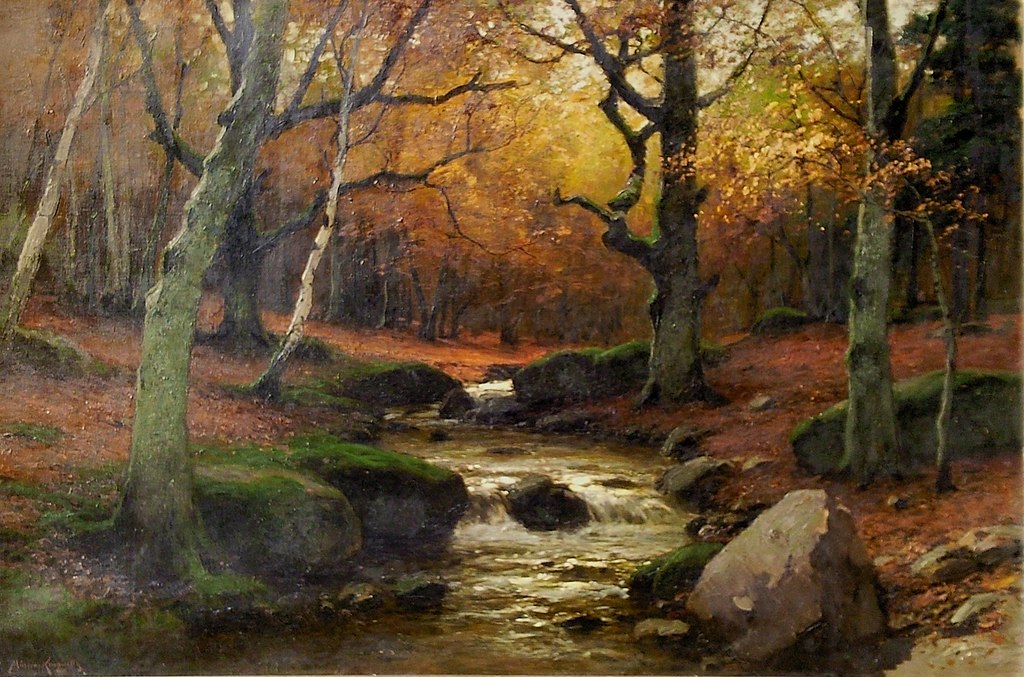
Konrad Alexander Müller-Kurzwelly was a German painter. He became known as an influential painter of naturalism and German impressionism. He studied at the Berlin Academy of Arts under Hans Fredrik Gude, who led a master class in landscape painting.
Konrad Müller-Kurzwelly began with a realistic landscape, following the Barbizon school, and was strongly oriented towards the reproduction of atmospheric moods. He often created Impressionist plein air sketches, which can be seen as works in their own right. It was important for him to reproduce sensually tangible impressions of nature in different seasons and create a pole of calm in his paintings, in contrast to the bustle of the ever-expanding metropolitan Berlin of the time.
Since 1883 Müller-Kurzwelli has been a member of the Berlin Artists' Association.
